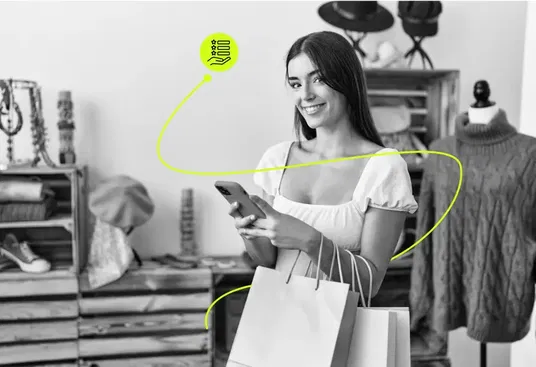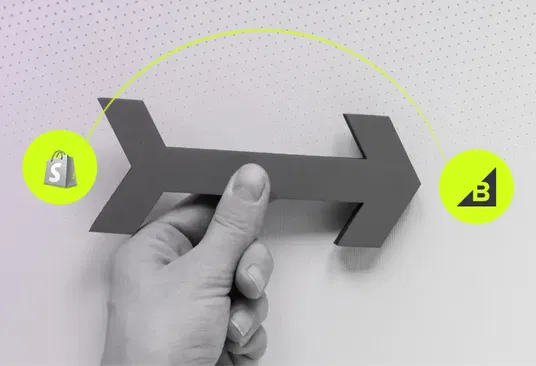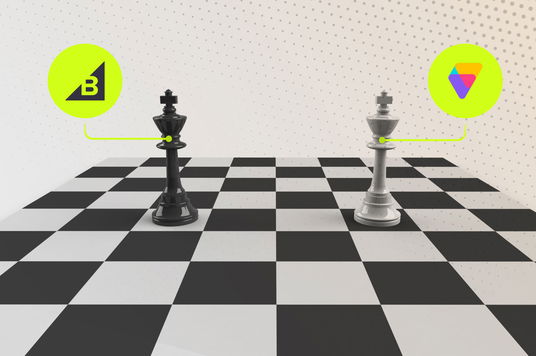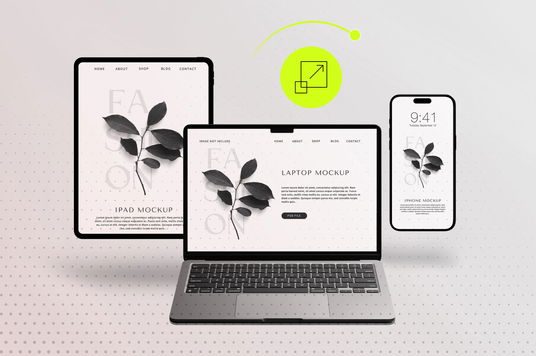Top Features Every Apparel eCommerce Website Must Have in 2025

- Why Apparel eCommerce Features Matter
- Core Features Every Apparel Site Needs
- Advanced Search and Discovery
- Visual and Interactive Features
- Personalization and AI Features
- Mobile-Specific Features
- Conversion Optimization Features
- Social Commerce Features
- Implementation Priority Guide
- Frequently Asked Questions
- Key Takeaways
Why Apparel eCommerce Features Matter
The apparel eCommerce industry faces unique challenges that generic online stores simply can't address. From sizing uncertainty to style preferences, fashion shoppers have specific needs that require specialized features and functionality.
Unlike other eCommerce categories, apparel shopping is highly visual, emotional, and personal. Customers need to feel confident about fit, style, and quality before making a purchase—especially when they can't physically touch or try on the items.
📊 Industry Reality: Apparel has the highest return rates in eCommerce (20-30%) primarily due to sizing and style mismatches. The right features can reduce returns by up to 50% while increasing conversions by 25-40%.
This comprehensive guide covers the essential features every apparel eCommerce website needs to succeed in 2025. We'll explore both must-have basics and advanced features that create competitive advantages.
"The most successful apparel eCommerce sites don't just sell clothes—they solve the fundamental problems of online fashion shopping: uncertainty about fit, style, and quality."
— Fashion eCommerce Research Institute
Core Features Every Apparel Site Needs
Before diving into advanced features, let's establish the foundation. These core features are non-negotiable for any serious apparel eCommerce website.
🔍 Advanced Product Filtering
Enable customers to filter by size, color, brand, price, style, occasion, and material. Fashion shoppers need granular control over their search results.
📏 Comprehensive Size Guides
Interactive size charts with measurements, fit descriptions, and customer feedback about sizing. This is crucial for reducing returns.
🖼️ High-Quality Image Galleries
Multiple angles, zoom functionality, and detail shots. Fashion is visual—poor images kill conversions instantly.
📱 Mobile-Optimized Experience
Touch-friendly navigation, fast loading, and mobile-specific features. 70%+ of fashion purchases happen on mobile.
⭐ Customer Reviews with Photos
Reviews with customer photos showing real people wearing the items. This builds trust and helps with sizing decisions.
🔄 Easy Returns Process
Clear return policy, easy return initiation, and prepaid return labels. Make returns hassle-free to encourage purchases.
Essential Product Information Features
Apparel products require more detailed information than most eCommerce categories:
- Material Composition: Fabric details, care instructions, and sustainability information
- Fit Information: Regular, slim, relaxed, etc. with detailed descriptions
- Model Information: Height, size worn, and measurements for reference
- Color Accuracy: Multiple lighting conditions and color variation warnings
- Availability Status: Real-time stock levels by size and color
💡 Pro Tip: Apparel brands that provide comprehensive product information see 35% fewer customer service inquiries and 25% lower return rates. Our apparel eCommerce development services focus heavily on information architecture.
Advanced Search and Discovery
Fashion shoppers often struggle to find what they're looking for because they search differently than other eCommerce customers. They use vague terms, visual cues, and emotional descriptors.
AI-Powered Visual Search
Visual search is becoming essential for apparel eCommerce websites. Customers can upload photos and find similar items in your catalog.
Key Visual Search Features:
- Image Upload Search: Customers upload photos to find similar styles
- Style Similarity Matching: AI identifies similar cuts, patterns, and styles
- Color and Pattern Recognition: Find items with specific colors or patterns
- Outfit Completion: Suggest items to complete a look from uploaded photos
Natural Language Processing
Enable customers to search using natural phrases like "summer wedding guest dress" or "business casual for men."
| Traditional Search | NLP-Enhanced Search | Results Improvement |
|---|---|---|
| "red dress" | "red cocktail dress for date night" | 60% more relevant results |
| "blue jeans" | "comfortable blue jeans for everyday wear" | 45% higher conversion rate |
| "black shoes" | "black professional shoes for office" | 50% better match accuracy |
Smart Filtering and Faceted Search
Apparel requires sophisticated filtering options that go beyond basic categories:
Basic Filtering
- Category
- Price range
- Brand
- Size
- Color
Advanced Apparel Filtering
- Occasion (work, casual, formal)
- Season and weather
- Body type and fit
- Material and care
- Style trends
- Sustainability features
Visual and Interactive Features
Fashion is inherently visual. Your apparel eCommerce website needs features that help customers visualize products and understand how they'll look and fit.
360-Degree Product Views
Allow customers to see products from every angle:
- Full 360-degree rotation
- Multiple zoom levels
- Detail shots of textures and materials
- Inside views for jackets and bags
Augmented Reality (AR) Try-On
AR technology is revolutionizing apparel eCommerce by addressing the biggest pain point: uncertainty about fit and appearance.
AR Features for Different Product Categories:
👗 Clothing AR
Virtual fitting rooms where customers can see how clothes look on their body type using their device camera.
👟 Footwear AR
Virtual shoe try-on showing how shoes look on customers' feet from different angles.
💍 Accessories AR
Try-on features for jewelry, watches, sunglasses, and bags using facial recognition and hand tracking.
🎨 Color Matching
AR color matching to show how different colors look with customer's skin tone and existing wardrobe.
📈 AR Impact: Apparel brands implementing AR try-on features report 40% reduction in return rates and 25% increase in average order value. The technology is becoming more accessible and affordable for mid-size brands.
Interactive Lookbooks and Style Galleries
Help customers visualize complete outfits and styling options:
- Shoppable Lookbooks: Click on any item in styled photos to purchase
- Mix and Match Tools: Let customers create their own outfit combinations
- Seasonal Collections: Curated looks for different seasons and occasions
- Influencer Collaborations: Styled looks from fashion influencers with purchase links
Personalization and AI Features
Modern apparel shoppers expect personalized experiences. AI-powered personalization can significantly improve both customer satisfaction and business metrics.
Personalized Product Recommendations
Go beyond basic "customers also bought" recommendations:
Advanced Recommendation Types:
- Style-Based Recommendations: Suggest items based on customer's style preferences and browsing history
- Size-Aware Suggestions: Only show items available in customer's preferred sizes
- Occasion-Based Recommendations: Suggest appropriate items based on upcoming events or seasons
- Complete-the-Look Suggestions: Recommend complementary items to create full outfits
- Trend-Based Recommendations: Suggest trending items that match customer preferences
AI-Powered Size Prediction
Use machine learning to predict the best size for each customer:
- Purchase History Analysis: Learn from customer's previous size choices
- Body Measurement Integration: Use provided measurements to suggest optimal sizes
- Brand-Specific Sizing: Account for different brands' sizing variations
- Fit Preference Learning: Understand if customer prefers loose, fitted, or regular fits
🎯 Personalization ROI: Apparel brands with advanced personalization see 15-25% increase in conversion rates and 20-30% higher customer lifetime value. The key is starting simple and building complexity over time.
Mobile-Specific Features
With mobile commerce dominating apparel purchases, your website needs features specifically designed for mobile users.
Touch-Optimized Navigation
Mobile apparel shopping requires intuitive touch interactions:
- Swipe Gestures: Swipe through product images and categories
- Pinch-to-Zoom: Examine product details and textures
- Pull-to-Refresh: Update inventory and new arrivals
- Thumb-Friendly Design: Place key actions within easy thumb reach
Mobile-First Product Discovery
📱 Quick Product Preview
Tap to preview products without leaving category pages. Essential for mobile browsing efficiency.
🔍 Visual Search Camera
Built-in camera integration for instant visual search. Customers can photograph items they like and find similar products.
📍 Location-Based Features
Show local inventory, nearby stores, and region-appropriate clothing based on weather and culture.
🎤 Voice Search
Voice-activated search for hands-free browsing. Particularly useful for mobile users.
Mobile Checkout Optimization
Streamline the mobile purchase process:
- One-Click Checkout: Save payment and shipping information for instant purchases
- Mobile Wallets: Support Apple Pay, Google Pay, and other mobile payment methods
- Guest Checkout: Allow purchases without account creation
- Auto-Fill Forms: Use device capabilities to auto-complete shipping information
- Progress Indicators: Show checkout progress clearly on small screens
Conversion Optimization Features
Apparel eCommerce requires specific conversion optimization tactics that address fashion shopping psychology.
Social Proof and Trust Signals
Fashion purchases are heavily influenced by social validation:
User-Generated Content Features:
- Customer Photo Reviews: Real customers wearing your products
- Style Hashtag Campaigns: Encourage customers to share styled looks
- Influencer Integration: Feature influencer content and collaborations
- Social Media Feeds: Display Instagram and TikTok content on product pages
Urgency and Scarcity Features
Fashion items often have limited availability, making urgency tactics particularly effective:
Generic Urgency
- "Limited time offer"
- "Sale ends soon"
- "Only X left"
Fashion-Specific Urgency
- "Only 2 left in your size"
- "This style is selling fast"
- "Seasonal collection ending"
- "Pre-order for next season"
Complete-the-Look Features
Increase average order value with intelligent outfit suggestions:
- Automated Styling: AI suggests complementary items
- Bundle Discounts: Offer discounts for complete outfits
- Occasion-Based Bundles: Curated looks for specific events
- Cross-Category Recommendations: Suggest accessories, shoes, and bags
💰 AOV Impact: Apparel brands with effective complete-the-look features see 35-50% higher average order values. The key is making suggestions feel natural and helpful, not pushy.
Social Commerce Features
Fashion thrives on social media. Your apparel eCommerce website should seamlessly integrate with social platforms where your customers discover and share fashion content.
Social Media Integration
Platform-Specific Features:
📸 Instagram Shopping
Direct product tagging, Instagram Shop integration, and shoppable posts that drive traffic to your site.
🎵 TikTok Commerce
TikTok Shopping integration and trend-based product features that capitalize on viral fashion trends.
📌 Pinterest Shopping
Rich Pins, Product Rich Pins, and Pinterest Shopping ads integration for discovery-focused shopping.
👥 Facebook Shop
Facebook and Instagram Shop synchronization with your main eCommerce catalog.
User-Generated Content Strategy
Encourage and showcase customer content:
- Hashtag Campaigns: Create branded hashtags for customer photos
- Review Incentives: Reward customers for photo reviews
- Style Challenges: Run contests for best styled looks
- Customer Spotlights: Feature customer styles on your website and social media
Social Sharing and Viral Features
Make it easy for customers to share and discover through social networks:
- Wishlist Sharing: Let customers share wishlists with friends and family
- Outfit Sharing: Share styled looks on social media
- Gift Recommendations: Social gift-giving features
- Referral Programs: Reward customers for bringing friends
Implementation Priority Guide
Not all features need to be implemented at once. Here's a strategic approach to prioritizing features based on impact and complexity:
Phase 1: Foundation (Months 1-2)
🏗️ Core Infrastructure
- Mobile-responsive design
- High-quality image galleries
- Basic filtering and search
- Size guides and product information
Phase 2: Enhancement (Months 3-4)
🚀 User Experience
- Customer reviews with photos
- Basic personalization
- Social media integration
- Complete-the-look features
Phase 3: Advanced Features (Months 5-6)
🤖 AI and Innovation
- Visual search capabilities
- AR try-on features
- Advanced AI recommendations
- Predictive analytics
🎯 Implementation Strategy: Focus on features that directly address your biggest pain points first. If returns are your main issue, prioritize size guides and AR try-on. If discovery is the problem, start with visual search and better filtering. Our apparel eCommerce development team can help you prioritize based on your specific challenges.
Frequently Asked Questions
1. Which features have the highest ROI for apparel eCommerce?
The highest ROI features are typically comprehensive size guides, customer photo reviews, and mobile optimization. These directly address the biggest pain points in apparel shopping and can reduce returns by 30-50% while increasing conversions by 20-35%.
2. How important is AR try-on technology for fashion brands?
AR try-on is becoming increasingly important, especially for higher-priced items. Brands implementing AR see 40% reduction in returns and 25% increase in average order value. While not essential for all brands, it's becoming a competitive advantage for premium and mid-market fashion retailers.
3. Should I implement all features at once or gradually?
Implement features gradually in phases. Start with core functionality (mobile optimization, size guides, quality images), then add enhancement features, and finally advanced AI/AR features. This approach allows you to measure impact and optimize each feature before adding complexity.
4. How do I measure the success of these features?
Key metrics include conversion rate, return rate, average order value, time on site, and customer satisfaction scores. Set baseline measurements before implementing features, then track improvements. A/B testing is crucial for understanding which features drive the most value.
5. What's the cost range for implementing these features?
Costs vary significantly. Basic features (mobile optimization, size guides) might cost $5,000-$15,000. Advanced features (AR try-on, AI recommendations) can range from $25,000-$100,000+. The investment typically pays for itself through improved conversions and reduced returns.
6. How do I choose between different AI and AR vendors?
Evaluate vendors based on accuracy, integration ease, customization options, and pricing models. Look for vendors with fashion industry experience and proven results. Consider starting with pilot programs to test effectiveness before full implementation.
7. Can these features work with my existing eCommerce platform?
Most features can be integrated with popular platforms like Shopify, BigCommerce, and Adobe Commerce. However, some advanced features may require custom development or platform upgrades. Our team can assess your current platform and recommend the best implementation approach.
8. How do I handle the technical complexity of advanced features?
Partner with experienced developers who specialize in apparel eCommerce. Many advanced features require ongoing maintenance, updates, and optimization. Consider the total cost of ownership, not just initial implementation costs.
Key Takeaways
Building a successful apparel eCommerce website requires more than basic online store functionality. Fashion shoppers have unique needs that require specialized features addressing fit uncertainty, style discovery, and social validation.
Here's what to remember:
- Start with Foundation: Mobile optimization, quality images, and size guides are non-negotiable
- Address Pain Points: Focus on features that solve your biggest challenges (returns, discovery, conversion)
- Implement Gradually: Roll out features in phases to measure impact and optimize performance
- Prioritize Mobile: 70%+ of fashion purchases happen on mobile—design for mobile first
- Embrace AI and AR: These technologies directly address fashion shopping challenges and provide competitive advantages
- Integrate Social: Fashion is social—make sharing and discovery seamless
- Measure Everything: Track feature performance and optimize based on data
The apparel eCommerce landscape is competitive, but brands that implement the right features create significant advantages. Success comes from understanding your customers' specific needs and building experiences that solve their problems while showcasing your products effectively.
"The most successful apparel eCommerce sites don't just have more features—they have the right features implemented well, creating seamless experiences that turn browsers into buyers and buyers into brand advocates."
— 1Center Apparel eCommerce Team
Ready to Implement These Essential Features?
Our team specializes in developing feature-rich apparel eCommerce websites that convert visitors into customers. From basic functionality to advanced AI and AR features, we help fashion brands create competitive advantages through technology.
Get Your Free Apparel eCommerce Feature Assessment →
Or explore our comprehensive apparel eCommerce development services to see how we can help your fashion brand succeed online.
About 1Center
1Center is a leading eCommerce development agency specializing in apparel and fashion brands. Our team has implemented hundreds of fashion-specific features across platforms including Shopify Plus, BigCommerce, Adobe Commerce, and custom solutions. We understand the unique challenges of apparel eCommerce and create solutions that drive measurable results for fashion brands of all sizes.
Written byPublished June 02, 2025
1Center


